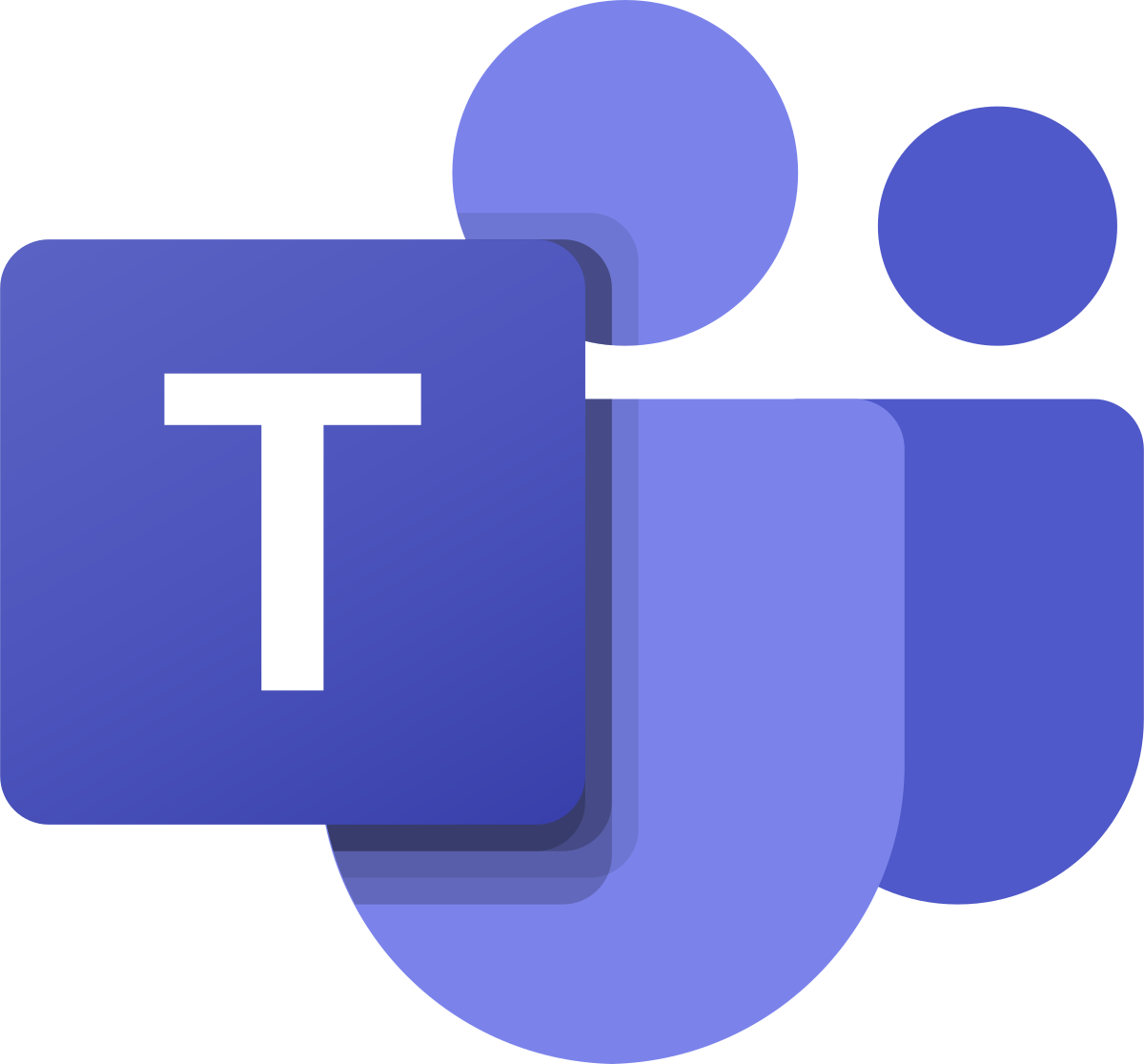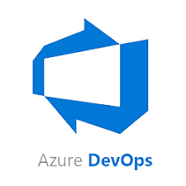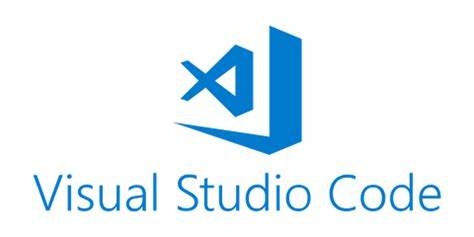
Amar Kumar Shaw
I'm Amar Kumar Shaw, a seasoned Software Engineer bringing over 4.5 years of expertise. Specializing in React.js, Next.js & TypeScript.With tools like Tailwind CSS, Redux, and TypeScript, I ensure stunning and maintainable UIs. Backed by Node, Git, Jest, and MongoDB, I'm dedicated to delivering intuitive solutions that inspire users. Let's collaborate and bring your vision to life!
- Role
Senior Front End Engineer
- Years of Experience
4 years
- Professional Portfolio
View here
Skillsets
- react - 4.0 Years
- Material UI
- Netlify
- Node Js
- Postgre SQL
- Sass
- Styled Components
- Vercel
- vite
- JavaScript - 4.0 Years
- Heroku
- CMS - 3 Years
- AI - 2.0 Years
- CSS - 4.0 Years
- HTML - 4.0 Years
- SQL - 1.0 Years
- TypeScript - 2.0 Years
- Next.js - 3.0 Years
- React.js - 4.0 Years
- SCSS - 2 Years
- Tailwind CSS - 3.5 Years
- CSS3 - 4.0 Years
- Type Script - 2.5 Years
- Express Js - 1 Years
- Mongo DB - 1 Years
- HTML5 - 4.0 Years
- webpack - 2 Years
- React Js - 4 Years
- Bootstrap - 4.5 Years
- AWS - 1 Years
- Rest APIs - 3 Years
- Type Script - 2.0 Years
- GraphQL - 1 Years
- Next Js - 3 Years
- Redux
- Babel
- Docker
Vetted For
- Roles & Skills
- Results
- Details
- CMS Web Developer (Remote)AI Screening
- 72%
- Skills assessed :CI/CD, CMS plugins, React / NextJS, SCSS/Tailwind, Storyblok, Git, Node Js, Type Script, Wordpress
- Score: 65/90
Professional Summary
- Jan, 2025 - Present 9 months
Senior Front-End Engineer
Stealth AI Startup - May, 2024 - Oct, 2024 5 months
Senior Software Engineer & Integration Head
Canibuild Technologies India Pvt. Ltd. - Jan, 2024 - Mar, 2024 2 months
Senior Front-End Developer
Expeditech Inc. - Mar, 2020 - Jul, 20211 yr 4 months
Junior Front-End Developer
Solivia Business Solutions - Jul, 2021 - Dec, 20232 yr 5 months
Mid-Level Front-End Developer
Mitroz Technologies
Applications & Tools Known

ReactJS

HTML5

CSS3 & CSS5

tailwind css

Postman
Figma

WordPress

Microsoft Teams

Next.js

Strapi

Bootstrap

Git

GitHub

Azure DevOps Server

TypeScript

Javascript
NPM

React Native

Express.js
Node.js

VS Code

Jest

Karma

Cypress

Webpack

Babel

Vite

GitHub

GitLab

Bitbucket

React Testing Library

Mocha

Yarn
.png)
Docker

Netlify

Vercel
.png)
Heroku

AWS
Work History
Senior Front-End Engineer
Stealth AI StartupSenior Software Engineer & Integration Head
Canibuild Technologies India Pvt. Ltd.Senior Front-End Developer
Expeditech Inc.Mid-Level Front-End Developer
Mitroz TechnologiesJunior Front-End Developer
Solivia Business SolutionsAchievements
- Collaborated with product teams and backend developers to execute new product and features.
Major Projects
CONA PACE
Mitroz TechnologiesLeonardo AI
Mitroz TechnologiesSignaxe
Mitroz TechnologiesTruvanta
Expeditech IncWyblo Switzerland
Star Content Solutions
Truvanta (Expeditech Inc.)
CONA PACE (Mitroz Technologies)
aicade.io
ResumAI
Canibuild
Canibuild Technologies India Pvt ltd- Developed and maintained dynamic web applications using React and Next.js, ensuring optimal performance and user experience.
- Built applications that efficiently consume content from headless CMS APIs, streamlining content management processes.
- Leveraged TypeScript to create robust, maintainable applications, enhancing code quality and developer productivity.
- Managed and customized content in Storyblok, Strapi, and other CMS platforms, including creating plugins/extensions to extend functionality.
- Optimized web performance through lazy loading, code splitting, and CDN integration.
- Utilized React and TypeScript to ensure modular, reusable components, and maintainable code.
- Resolved cross-browser and cross-device compatibility issues, ensuring a seamless experience across various platforms.
- Engaged with cross-functional teams and stakeholders, facilitating effective communication and collaboration to drive project success.
- Rapidly prototyped web applications to showcase new ideas and concepts, fostering innovation and quick iterations based on feedback.
- Applied SEO best practices, including semantic HTML, structured data, and meta tags, to enhance the platform's search engine visibility
Project Details-
CONA Osapiens
Mitoz Technologies- Provide end-to-end support to the CONA Osapiens Web portal and Osapiens Mobile App.
- Contributed to building Strapi-based CMS integrations for streamlined content management.
- Issue resolution that has been raised through the Tickets on priority basis.
- Technologies: HTML, CSS, JavaScript, React JS, Next JS, TypeScript, Tailwind CSS, Shadcn UI, Redux.
Project Details-
Education
Bachelor of Commerce (B.Com)
Surendranath College, University of Calcutta
Certifications
Python 3 Master Course for 2021
Udemy (Jun, 2021)Introduction to Programming Using HTML and CSS
Mosh (Jan, 2021)Javascript for Beginners
Mosh (Jan, 2021)Developer Program Virtual Experience
Accenture Nordics (Oct, 2021)Software Engineering Virtual Experience
JPMorganChase (Aug, 2021)Complete Web Development Bootcamp 2021
Udemy (Jun, 2021)
Interests
AI-interview Questions & Answers
So yeah. Hi. My name is. I'm a software developer with more than 4 years and 2 months of experience, specialized in front end with, uh, having worked with Google and alternate and various other teams. So I'll just give a good brief about me and myself. So I started my career with the and get a project called Kona Housekeeping, which was KOKUAN North America. And, uh, the there are the product was, uh, a web portal dedicated to the mobile application that was serving the entire North America, and I was from the entire from the India team serving, uh, maintaining, scaling, and doing, uh, development things in that particular portal and as well as, um, particular mobile applications. And then what, uh, what I go through is, like, uh, the text I go there was, uh, on that particular product, but HTML, CSS, JavaScript, React, Next. Js, TypeScript, Redux. Similarly, in the React, uh, in the for the mobile application, we had React Native, but in the back end, we had something called, uh, React, uh, SAP, which we are using. And then, uh, similarly, I worked with the Kuna, SAP and teams, and that was their we are, uh, working on the work portal and, uh, UIVA using Material UI, and things like that. Then I, uh, moved on to the project that called last seen accidents. So it's a very interesting project. A modern site, MongoDB Express, JS, React, and Node JS, uh, and, uh, with our dedicated mobile application which was in React Native. So what we are doing over there is about the, like, uh, cloud, uh, based software where we can upload a media and things like that, and that media particularly will be have a timer or at what time it will be shown to the screens that has been there in the, uh, real time screens, uh, which are there in the streets. So it's a very good way of advertising and then that application we were building. And there are my responsibility because we maintain the scale and, uh, do the entire development of the responsiveness to uploading feature, to deleting feature, managing rest APIs, working closely with the back end team, understanding the requirement, making things work with a onetime and all and all, and, uh, making sure that things are going pretty good, uh, as for the alignment with the client as well. And then I've, uh, I worked in the project called Leonardo AI. So AI was a very, uh, Leonardo AI with the cool project with the other work with, uh, like, in a front end React, make deals back end. We had something called a Django Flask because, uh, along with the AI algorithm. But apart from this, we had a a CMS called scrappy and sanity, which we are using parallelly for other product in the the amount of test AI. So, uh, this product, we are using the, uh, made 2 sub product quality incident prediction, resolution in there. And, uh, resolution prediction engine where we're taking the input from the user and making sure that we are going through, uh, taking the inputs, generating the AI algorithm in the back end connected front end, and then, uh, soon that is written in the front end. We're similar to that. We are using estimates as a task. They here, I learned a lot of about, uh, CMS, how CMS works, how work results, or things like your sanity works, and things like that. And right now, I'm working with Expedited, which is, uh, like, uh, US service company where I'm working with, uh, their product called 2 one. They're going to run a very interesting product. And, uh, where I will be building more of, like, uh, the text stack is a STMC, JavaScript, React, Next. Js, TypeScript, search and UI, uh, Tailwind CSS, and then things like that. And, uh, in the back end, we have lost in Golang. But, yeah, during this period, I have, uh, closely worked in their other projects, which was mainly on the Strapi and Next. Js, and I use Storyblocks as well. And WordPress are building very good application, like, uh, their, uh, end to end ecommerce things and things like that. And then, uh, with the help of Sanity and Strapi, we are we are creating good blog news applications and, uh, maintaining the blog the post and things like that, connecting with and maintaining all the scalability, uh, with our dedicated, endless CMS, which is a very interesting project. So this is all my, uh, experience. I've been experiencing the managing as well and, uh, creating with the team and taking the deadline to the products. So, yeah, that's I'm good at communication as well. So that's all about me. Yeah.
So yeah. Uh, yes. I do work with, uh, an, uh, CMS and the developer, like, regarding the CMS, and it was a very good experience. Actually, I have a various kind of experience with the CMS. I worked with Sanity. I worked with Strapi. I worked with WordPress. I also worked with Storyblock in here and there. But now, uh, mainly, I worked on all this. And the Sanity, Strapi, and WordPress is there that I've used extensively even dedicated WordPress are very extensively in my team and projects, things like that. Uh, developed, uh, using dedicated WordPress itself, I've developed many as ecommerce application, food delivery application, and things like that. But as far as the same is concerned, I know how to connect. I I build the application in your back end with the work place and have the CMS copy where we used to connect mainly. Uh, I worked with both React and with the c head of CMS. But, yeah, uh, what I have seen till now is that React, uh, is pretty much application. But, yeah, comparative NexSys provide a very good ways where we can manage and access the, uh, headless CMS thing and provide a better connectivity like, when I'm working with Sanity and Strapi, I understood that provides a better, uh, thing, uh, in many ways, uh, to connect Strapi and Sanity. But, yeah, working with React feels the same, but there are some things like authentication, service are rendering, uh, static site regeneration while we are taking, uh, our back headless CMS for creating blog posts, creating ecommerce application where which is data heavy. We should be using an SEO friendly. We should be using a static side, a server side generation, which is, like, mainly, uh, uh, serving the entire SEO created in the file on this directly on the server side for the dynamic data which will come from the headless CMS. So I worked with that, and I had a good exposure how to, uh, set up this, how to develop the features, how we can add more posts, and how to create a scalable, headless, uh, and Next. Js CMS application where we can just add a particular thing and it will be properly maintained. Like, recently, I worked I built up food recipe application which is built in React and Next. Js that by, uh, Strapi, uh, actually, Sanity where I build the entire post application and things like that where, uh, the proof everything that there was a food application, there was food blog, and food portfolio. So whenever a user clicks on the, uh, ads in the back layer headless image, a new post, it's, uh, automatically get pops up in the first and all the details when you click that, you will get all the details in article form article form. You can comment and things more of that, and every details is organized in a similar manner. So, yeah, I have a keen and try to do that. And I also have a, uh, good understanding how to build ecommerce applications with sand any headless CMS. I used WordPress in some cases, which is a good impact for me. And, yeah, that's pretty good about exposure in headless CMS apart from this. I also got portfolio application, things like that using Strapi. Uh, it's like, uh, when we can and story block is also a very good thing for content, and it's getting good very good day by day. And, yeah, it depend upon every headless CMS as a, uh, uh, in my opinion, is a best way to maintain and scale any sort of application in a build a scalable full set application, and we don't want to dig deep that bad in that of a back end thing, but still want to build a reliable scalable code. I think all headless team has provided a very good understanding and, uh, accessibility and scalability. Uh, but, yeah, uh, it depends upon the use case to use case where you want to implement and upon the preference. Uh, for me, every headless CMS is a good, uh, CMS because it's provide and along the lines provide all the same things, uh, we should be knowing, uh, which is the best for us. It's like, uh, whether it is WordPress, whether it's Storyblo, whether it's Sanity, whether it's Clappy. Every single thing, like, uh, we have, uh, it should be considered that how he wants to showcase that and how we want to implement that, which is preferable for us. So, yeah, my experience with headset listening is very good and very extensive. I know understanding how to manage content, how to develop things, how to set up the data, how to create the authentication, how to link between them, uh, using the ID and productions, how to serve build a client server side, how to do directly call API calls, how to understand the API calls and, uh, take it into the front end, uh, visualize it, and make a properly reusable, scalable, reliable product using all of that. So that's a pretty good experience about me, and I love to work with sales in some yeah. Uh, It's a good journey, and it's a very good, uh, I would love to work on that. So that's all about me and, uh, about the experience with headless CMS.
So, yeah, uh, how I use, uh, the question is how I use the story block as a service in, uh, in next years? It's something like, you know, uh, just I said in the previous conversation that, uh, uh, Storyblock is a server side I mean, headless CMS which provides a ways of things to manage content, to scale content where we can we can use directly as a back end server, and we can build a lot of things. So, uh, uh, how I use the server in the production application whenever there's something like if you want, uh, there are different, uh, condition and use cases where I want to use that things and, uh, like, creating component for rendering, uh, fetching data and the static props or large datasets and rendering scalable content, which is, like, reliable and accessible. And, uh, uh, things like that, we can use in this. And then, uh, what we do is, like, um, uh, it totally, uh, provides end to end optimization, optimizing, uh, like, production build and things like that. Uh, I have a good experience than, uh, managing content whenever there is a user management. Production, I use, uh, uh, for scalability of a particular application where we don't want to dig out dig more and more. We can write the entire logic in the front end, and there is a dedicated story block which helps us optimize the production build and made a reusable, scalable con component. And yeah. Uh, apart from this, there are also some parts where we can use test, uh, headless CMS, uh, like, should be of, like, in terms of payment integrations. Uh, it provides a very reliable and very scalable as well as very, uh, comparatively very easy to go method to connect with the directly with their CMS things and provide us a very good way where we can manage and handle the payments as well. Apart from that, it provides very good, uh, roles to, uh, maintain the API calls and the CPS calls, uh, which provide a good service and all. Uh, it's a very good way we where we can manage the content, like image, video from our towards a very reliable source and very reliable way where we can manage and scale the content as well. Apart from this, the, uh, connection or does, uh, like, difficulty in comparison to other back end servers, it's pretty low. And, uh, here in Storyblok, there's a very user interactive interface which in, like, building, uh, things very quickly and, uh, understanding the product better way where we can manage things better, uh, betterly. And there is a categorization that we can define and which we can use to make make new categorization, and it will be automatically, uh, reflected the same logic across all the platforms and, uh, things like that. And apart from this, it's very easy to deploy, uh, where we can do these things like that, uh, where, uh, definitely, deployment is something, uh, in Storyblock or another common make is very easy in comparison to other dedicated servers like Node. Js and things like that. Accessing controls, various control, we can manage controls very easily, like, uh, user or it is a administrator role. All these things is very optimized in your store to block, which helps in production to things like that. Then other functionalities like catching and things like that, which helps in the memorization, overall optimization of the production build, uh, is there where we can maintain request, API users, and things like that. So all these things are plays a vital role in production application when we are using story block comparison to the day get a back end where we have to dig deep very deeply to amend in all this story block or mix a packet and give us a way we can where we can use it in production, and, uh, we are ready to go with our application in, uh, scalable base. So, yeah, that's a very good thing about the Storyblocks, and that's my understanding of Storyblocks, working with the Storyblocks for long.
So, yeah, uh, I'll just describe, uh, what are the most complicated, uh, application that I have created and, uh, like, managed. Uh, is the Coca Cola application was the, uh, the biggest application that I was managing because the management is was so, uh, is the application was so large as it was scaling from entire country that there was a global team from Holland, US, UK, and different parts of the country serving that application, and the particular application was serving the entire North America. So when our application got served in the entire, uh, nation, uh, more of a con continent to the, um, uh, scalability over there is very, very, very, uh, uh, real we have to make sure that it should be very reliable, and the coach should be very well with it. So what I did is, like, over there, the management, uh, what I did, uh, is is one of the biggest application that I do. So there and there, I understood a lot of things, whatever doing that, uh, I was not only writing a code, uh, and it's not application that will be keep writing a code. It's more about writing a code which is more scalable, readable, reusable. Uh, it should be get it should not be coming as a rework and things like that. And we have to make sure that our our the product which we are building is going to millions of people and who who are going to use it in a in their daily course of date, uh, over there. Uh, so the, uh, proper statement of logic that I understood how to write a proper code which is scalable, readable, scalable, uh, like, uh, reliable as well. Then, uh, I understood for the that there's, uh, whenever we are talking about the large scale application, one of the most important thing that, uh, I we all able to see the the data or the state management in the application. So that was built in React and, uh, like, I was using Redux as a a dedicated state management library because in order to manage, uh, such a large application, we need to use we cannot rely on hooks and context APIs. For that, we need, uh, reducts. So Redux was a way, uh, that I learned how to implement the Redux on a larger scale basis and how properly state is going to be managed, how the process is working, and how why Redux. So, yeah, I just give a brief of Redux. Redux based on a is based on the flux architecture where we have accent view dispatcher on store. So store is working as a in order to having so many components in the application, it's very tough to manage dates and, uh, change the data across the various nodes of components and child and parents. So stored view stored provided a centralized store where we can, uh, store all our state and datas, which, uh, bind data in that, uh, React applications and, uh, providing a lot of things over there. We can manage it directly and it can be reliable to across all the components. So it will be, uh, improve the updateability, scalability, and reliability of the states on the data that we have. So they are done how to, like, implement those things on a larger scale. And then the other functionality that we have to see that one of the most important thing. Whenever we were working with the most complex project or largest project, things also comes as the code is way way larger than as to serve in the entire continent. Performance optimization comes into the picture, which is very important as as well as I considered. It's very important, to be honest. Uh, so over there, uh, even the little things, uh, like, re renting of a particular comp component makes a larger impact because we have a huge number of components that is running running in that application. So in order to, uh, optimize the performance, we have to use the things like lazy loading, suspense for, uh, the, making the things like that, uh, the, uh, pre rendered estimates so that user can interact. And most of the data that is data heavy, the most complex, but the other data heavy, it should get rendered in the back end side and still that, yeah, we can e easily able to interact with the, uh, front end and other, uh, parts that we had, like, nav bar and sidebar, for example, and any other pages, things like that. Then, uh, there are also thing for optimization. We use use memo and memorization, catching to optimize every single render. This should be done in a a proper basis. Then there's a very good impact, like, uh, working with our experience with the prop channeling, uh, channelizing the proper and following the proper agile and CSAB pipeline so that we are the entire application going in a particular way, and it should not get, um, uh, disturbed. The flow should not get disturbed. So prop making a proper development flow using a is very important, uh, in the any complex project, which is very important for the long term code, uh, uh, like, development and things like that. And apart from that, uh, daily stand up calls and meetings was there, which, uh, able to understand that all the employees we are working globally or, uh, nationally are on the same page, and we are working towards that. So that improves the time, efficiency, productivity, reliability, and scalability. So that's all about that I have learned from a bigger large world. So, yeah. That's all.
Plug in. You're setting the functionality. How you maintain and update the plug in yourself, ensuring that the functionality and the compatibility with the CMS. So, yeah, in order to maintain any any plug ins and things like that, uh, what we have to do is, like, uh, you know, we have to make sure that, uh, we are getting the, uh, maintaining, uh, and updating a plug in, especially for a functionality or are involved in several, like, uh, things like that. Uh, 1st and foremost, that we have to understood that the particular plug in that, uh, we are using, like, what is supposed to, uh, in plug in WordPress and things like that. Uh, it should be updated, and the plug in dependency should be updated. Keep on updating, so it should not have any bug and hack and things like that. Uh, and we should review our, uh, like, documentation to understand that if there is a bug and compatibility changes should be done or not. And then what we have to do is, like, we have to make sure that we keep on, uh, like, uh, test the plug in, ensuring that, like, before, uh, taking out any updates, like, we are going to do with that, uh, plugin and things like that, working with the CMS, we make to ensure and test it that it is the code is reliable, secure, and scalable. It should not be having any, uh, uh, core bug or, uh, errors that can lead to the memory leaks or data leaks or even that, uh, uh, that can, uh, lead to, uh, specific authorization or, like, leakage of the problem. 2nd and third, what we have to do is, like, uh, we have to make sure that, uh, we are doing, we have to make sure that we are doing a compatibility check is with our CMS because older version and the newer version conflicts in the horizon to very bad extents. And, uh, we can lay it into some a lot of version issues, and then I can have that, uh, problems as well. And then, uh, what we have to do, we have to keep taking feedback from the users and all how they're feeling and all of it that the compatibility is having done or not. Then documentation on both should be there. And one of the most important things we're looking with maintaining and scaling, updating, plug ins, uh, functionality with the CMS is that we have to make sure the security patch updates is key. We have to keep on looking the security patches that will be in order to ensure the security of the plug in should not impact the overall application and things like that. And, uh, so we are updating them. Apart from this, we have to make sure we are implementing our good and, uh, very important version controlling system apart from the, uh, to ensure that we can, uh, track the changes. And when if there is any issue or, uh, things like that, we can track back or collaborate with other developer to solve that. Then, uh, communication is very important in that sense. And, uh, we have to keep on engaging with the communities and all. And, yeah, uh, that's all what we can do, uh, to update, like, complete the things and, um, our maintenabilities, compatibility and scale functionality, uh, by updating our plug in, uh, ensuring the air compatibility with our CMS system with proper security updates, with proper, uh, user feedback, testing, and having, uh, proper version controlling system. So that's a very good way if we can do and maintain and scale the things with the CMS without having, uh, and getting more features from the new plug in, but ensuring the security and all other stuffs like that. So, yeah, that's we should consider while developing all those things and, uh, working with plug ins in the CMS when we are updating that later. So yeah.
Explain in brief how you have contributed any code to CMS codec and alter the way CMS work to your advantages. So, yeah, uh, I'll just give a brief about me. Uh, I'll just, uh, where we have to fix. Uh, what we have to do is, like, uh, ensure any code basis and things like that. Uh, so, yeah, what I did to make any changes and any code base, how to to waive the CMS work to your advantages is like, uh, while I was working with Sanity I'm just giving a brief. Uh, while I was working with Sanity, so there was, uh, the the the database we were having in the Sanities were predefined in my screen or something like that. But for the usability and scalability of the application, I I mean to understand that the database and the schema database should not been, uh, a skill format in that. So over there, I what I altered is, like, I changed the order to base code base of the sanity and, uh, changes it to the post grade SQL for my user. And over there, I know I read the documentation thoroughly how they're working with the databases and, uh, make sure that changes the databases from basic databases to the post this database. And from there and then and there, I started scaling the application, uh, changing the code base of the CMS from the, uh, from the basic data model to a different data model, which we are using, like, post, then, uh, what I have to understand that any, uh, changes when we have to work is, uh, first, we have to understand the data model, how they are working. 2nd, what we have to understand is that the schema customization, if you need to modify any data structure or any scheme updating, uh, like, definition and sanity also. Uh, we have to fit the specific requirements so that I understood and then make the change in the post with these 2 things. And then, uh, now there are some changes that I made into the content management system. So I understand the content management system of c m, uh, sanity and then making it, uh, simple to update the website and reliable. There was this where we have to fetch the data and image optimizations can be done where, uh, the image is directly when we are uploading a image, it was directly coming into us, uh, in a format. So, uh, what and there's a specific way we have to fetch the image, and we have to take the data. We're using the URL builder or things that I could be had. Then, uh, what I added, I optimized it, implement the lazy lazy loading on the upper side, and then, uh, we have, uh, getting, uh, digged deep on that, uh, uh, JSON file, how the API is getting called in the code basis on sanity or CMS side. Then, uh, changes the way, the size, and things like that to for the users of mine and, uh, scale the application in that way. Then, uh, there are some way where we can particular way where we can, uh, integrate the APIs and things like that. So I ensure, uh, understand the APIs of the any CMS is sending while, uh, performing in certain action, uploading an image or creating a blog page or creating a dedicated ecommerce of the understand that and made made some changes, uh, and scale that. Like, uh, if there is a product requirement where we have to, uh, have a author and things like that. So I used to create an additional scheme of a author or the product manager or the description side or the review. These are the things that are manually the rule option where we are, uh, managing the code base of the CMS to, uh, use made it use case to our requirements and things like that. Then I keep doing the voice and control, and this allows us to track changes and collaborate with the team and, uh, like, previous works as well. So, yeah, that, uh, pretty good I have done and performed. Uh, in some or other way, we I tried, uh, one of the most, uh, important thing is to, uh, alter and change hack a code basis, uh, in a CMS way to do the performance optimization because there's a certain way there are a lot of dependency in the CMS that are which we have to use. So I go dig deep into the core basis. And, uh, for web website performances, I have uses, like, GraphQL queries. Then c c d and caching, I have also used to efficiently retrieve data and deliver the context. So this is how I I had out of the way. I understand the how data model work, how CMS is working, but, uh, pattern they are using, reading thoroughly through the documentation, making changes in the, uh, data, uh, data model with changing the databases to SQL or things like that, uh, improving, uh, the application with, uh, manual code and all, uh, for image and optimization, more of a image than we have used caching for memorization of our optimization, proper words and controlling, and things like that. Uh, so that's a pretty good, uh, description I would like to give when we are trying to, uh, when I have contributed to, uh, CMS and make changes for my advantages and making any product betters in a better way, ultimately. So yeah.
Describe your working experience with CMS platform Magento on WordPress or Shopify. So, yeah, now my, uh, experience with, uh, WordPress or Storyblock or Magento or Shopify including Strapi or Sanity as well. So, uh, I have a really good as I said, like, I had a good experience on working with the Sanity. Any any any, uh, CMS platform, like Storyblower, WordPress, Magento, software. Every single, uh, platform that a CMS platform that I have I've worked with, I have seen that there's a, particular way and a definite way. All the application follow in a similar pattern data structure to maintain, scale, secure the entire thing. So, uh, my experience, uh, development experience with Storyblock or with some of these stuff, any CMS platform is, like, uh, been very good. I understood how the data model works in, uh, across all the seamless platform we have here and there all the similar way. What we have to do is, like, uh, uh, any experience any any seamless platform, because we have to make sure that, uh, they'll, uh, that, uh, should be installed in our system as a, uh, pack using a package manager that we can have that accessibility to that particular, uh, seamless platform. Like Sandeep, there's Sanity. We have a particular way to install the Sanity in our system and, uh, run on our local machine for us to check and test that. So every CMS platform for us, there is a part of installation and project description. Then we have to what we have to do is, like, understand the complete data structure, uh, how these are working. And then, uh, what we have to do is, like, setting up our, uh, services, which we want to deliver our content, but we want to make sure that, uh, it's going through the CMS platforms. And here and there, all the content management platform systems are, uh, wants to make the things reliable, scalable, easy, user friendly. So, yeah, they provide that a way where we can, uh, how we can there is a dedicated way where we can construct the data structure or the what you can say, like, the data models in the back end and schema and defining the schema as for the recording. They would totally, uh, uh, definitely, where where we can use how to use define schema for blogs, how to use it for ecommerce. So that's a very good way where we can understand on that. I I used to understand on that. Then, uh, after creating of a CMS services, what we have to do is, like, I used to create a content, uh, component in some senses in the front end side, which is whether it's React or Next so that we can, uh, take that data and render that content in our front end. So design our content to render on switch from the seamless platform, and, uh, this could include our pages, headers, photos, and other content logs as well as, you know. Then, uh, after fetching the data, what I use, uh, like, uh, generally used to do, like, face date searching the data, making sure what kind of, uh, way you want to fetch the data and making sure, like, whether I want to serve as the static side props or data server side props as, uh, as a platform at all. But there are some ways where where mailing blocks and things like that where we want to render the, uh, data very quickly. Uh, use get static sector where we have prerendered the stream file. And but in the case of the data heavy and the CF friendly place like, ecommerce where we have to keep on changing the data, we, uh, generally use the get server side props and where we can dynamically get the data every single time and get get renders, but then more of issue friendly than we, uh, what I used to do to rendering the entire content, uh, entire content. And, uh, then what I have to do is, like, after ending the content, uh, that's, uh, we keep on optimizing the ways in, like, memorization, catching, uh, proper API fetching, and things like that, enabling, uh, security more and more security layers or trying to make the application more secure, ensuring the proper connectivity of the back end with the front end. And that's pretty much about all the application that we did, uh, whether it is a condition, like, whether we are building a ecommerce application, we have simple website, uh, news application, or anything like that. Uh, the approach can be different, but once we understand the basics or the base of any CMS platform, how they are working, uh, moving from here to one platform to another platform will be very easy and very, very reliable. Uh, and everything is very good to go. We can easily manage content and scale it in that. So that's what I have seen working with Strapi's and it will work on other, uh, platforms. So, yeah, all are same. Uh, it's sub it means the basic and, uh, base if you understand, if we can scale to our next level. So yeah.
No JS snippet that is supposed to handle a get request. Can you debug why the server might not be responding? So, uh, this context 6 So what, uh, when you're getting a get request, can we debug why this app not be this only? Why? And the white server might not be responding. Yeah. Now there are 2, 3, uh, if I say what I can see from the get request is that is that, uh, we are trying to fetch a data and trying to take a data. And, uh, we are trying to use in a get request, and, uh, we are not getting a particular present. There might be that, uh, there's something that, like, uh, some cases where we want to, uh, take a get data, but we are the user is not authenticated. So with that place, the authentication came into the picture where we can, uh, like, authenticate and things, uh, understand that, uh, uh, that is not aligned, uh, API to the get call in a particular way and the middleware comes into the picture and things like that. And, uh, yeah. Now there is a way how we are trying to do this, and, uh, things are not working. There are other ways, like, there might be some Internet issues. There are chances that we're, uh, we have some server over the road, uh, security issues and application error that is going on. But, uh, yeah. We can troubleshoot any, uh, actions and take appropriate action, uh, like, action to resolve the issues like that. And over here, like, we have a simple, uh, Express user application. We are trying to get the data from particular endpoint, and, uh, we are not able to see that there might have a chance that endpoint is not even defined in the API level, uh, which we are trying to fetch. Although, uh, look, uh, endpoint is not even defined, uh, server side where we can have to implement and, take the datas and make the changes. So, yeah, that's my understanding of this good snippet. Yeah.
Scenario where custom CMS plug in. Imagine a scenario where you custom CMS plug in needs to handle concurrent rights effectively. I would implement transactional integrity in this case for so, uh, if you're just asking me, uh, like, uh, how to customize, uh, a handle plug in, uh, when we have to write something and transactional integrity in this case is, we have to implement our 3 port. Of course, for most of we have to utilize the database transaction to ensure that, uh, operation, the database have atomic consistent and isolated. Uh, transaction like, this kind of transaction will help us to maintain the data integrity by implementing an, uh, like, databases to, uh, into a single unit of work and things like that. And then, uh, what, uh, we can do is, like, we can automate, uh, optimistically, uh, comes do the things, and then, uh, version controlling that we have we can do, and then the version information from the video content to track changes and then detecting the conflict over there. Uh, else, what we can do is, like, uh, time the mechanics, uh, to handle the cases where, like, transaction failed due to the conflicts on other issues. For example, if I'm just trying to give a example to you, uh, transaction failed due to the deadlock and or a config in retrying the transaction after a sort of delay. What happens is, like, uh, we, uh, use the exponential back of states to, like, avoid this overbuilding system, uh, in directories and things like that. And uh, what else I can do is, like, uh, set up in, uh, monitoring alerting system where we can, uh, like, post or understand the detail of the failure, failures, and, uh, related to all that areas where we can monitor whether, uh, monitoring is getting filled and alert can be given potential errors to avoid a potential error and, uh, taking the, uh, right message effectively and in a time maybe. And one of the most important things that we we can do is, like, testing and validating. Probably, if we are we thoroughly test and validate the transactional integrity, uh, mechanism on the, like, various, uh, condition and concurrency or using automated testing or a extremely high concurrency con right? So by, um, uh, by that behavior, I think we have, uh, there's a way we can handle the functions. Right? And, like, I made a situation more better and, uh, avoid those error and implement a good implementation. So I think by implementing this strategy, you, uh, we can ensure that transactional integrity can and custom CSS, like, uh, handling icons currency for video content or maintaining data consistency, which is very important when we are building applications like, uh, video streaming and things like that. It's, uh, we can consider these points and things like that we can do. So, yeah, that's
What? Okay. So your, uh, what strategy I apply to generate the Next. Js website which heavily relies on the story block content? So, uh, there's a multiple ways where we can, like, uh, in, uh, like, optimizing any kind of, uh, SEO and all. React has a great feature to optimize the SEO team. And, uh, whenever we rely on story block content or any other CMS platform, uh, Uh, I would like to say that that, uh, React comes with something all we have. We just discussed that static side generation. So static side generation will get static side props. It's something, uh, which is mainly of, like, a pre render HTML elements and all that stuff. Whenever we are using any earlier CMS, uh, we can consider using, uh, like, whenever we are putting any kind of, uh, side mapping or things like that, what we can do with the help of any CMS platform, we can, uh, in the front end, we can, uh, take that API fetching and those get server side, uh, get static side prop where we can able to, uh, pre render the HTML files and, uh, ensure the, uh, the files are already into those browser, which helps in the issue to be prepared very firstly and make the things, uh, better way. But instead of that, we have also have a good server set plus which make SEO friendliness and dynamic data. What we can do is, like, we can look, uh, there are multiple methods. I'm just gonna tell, uh, what we can do. It's something we can customize the metadata and ensure that our plug in, uh, that, uh, each pieces of content we have and the metadata tag we are using and description we are using and description we are using is optimized for, uh, that particular content that we are coming and going to deal with. So apart from this, uh, we can use structured data markups where, like, we can implement that structured data and markup changes that can enhance the search engine understanding. Apart from this, there are multiple ways where we can, uh, use the XML site mapping that, uh, in ensure the site mapping that are crawling the entire crawling of the website, which ensure a better reliability and the SEO of the, uh, uh, internal applications and all that. Apart from that, uh, we can ensure the URL structure, uh, which helps in the server side, uh, getting a more s issue frontendings or of things like that. And, uh, as far as the static side generation is concerned, site mapping, as I said, like, help us, uh, something to discover and make sure I was, uh, like, a seamless plug in is, like, supporting a Zoom site mapping, uh, and we have something exceptional in, like, Google and Bing which help us. Then, uh, we have a mobile friendly design is gonna be the most important thing, uh, in terms of SEO. We know that we have we're trying to check the SEO scores and things like that. Google's course, those companies only, uh, which have a mobile friendly response to design. So by dealing with the strategy generated application, we can ensure the speed, uh, reliability, and fast space, which also improve the performance of the application, which ultimately led to the increase in ACO, uh, creating a responsive design. Uh, then various ways to, uh, optimize our speed, like, um, using, uh, various method of lazy loading, suspense, or using memorization, hooks of React images, use memo or, uh, like, uh, things like that and catching facility to, uh, make to make our performance more optimized. So Google and any SEO will be preferred. Any SEO will be preferred on based on 4 by things on speed, on reliability, on the test that we have written. Then, uh, whenever we are doing any, uh, plugin integration, we can also you know, to improve that, we are also there is a way we can integrate, like, some popular SEO plug ins, which in sales, like, our CMS, uh, capabilities ridiculously made for, uh, optimization of c our, uh, uh, SEO content. So, yeah, that's all about us, and we can write even, like, a, uh, code like that, uh, which implements us. So that's all we're understanding of.
What consideration would you take in account integrating that third party sign in, uh, in NextGen's secured by okay. So what what consideration would you take into account and integrating third party signing services in NextGen's application secure by type script? Uh, okay. So, yeah, the whenever I was talking about any integrating any sort of, uh, application, like, like, mainly for user authentication or any services using React, Next. Js with just, uh, TypeScript. Uh, integrating third parties. Uh, it makes it more secure and things like that because what happens with Nextiva's, uh, including with TypeScript is like, uh, we, uh, uh, when with TypeScript, we integrate with the Nextiva. Every single way, we can define the type of particular things which implement the type, uh, avoid the type error and things like that, and I think make the things more reliable and things like that. Uh, whenever we are third party signing, uh, when we are trying to integrate, we make sure the data type of any third party application, uh, the dependency that we are using should be compatible or, uh, should be defined properly in the in the way of typing and, uh, importing, exporting, any of that sort of things will be maintained in a particular way. Then, uh, define the particular type and the data structure using the, uh, TypeScript interface should be properly implemented. Only then the, uh, it will get into the proper way and proper channel. There will it leads to a lot of errors. We make sure that, um, you know, type declaration should be done pretty earlier. And then apart from this, we should be using, uh, type augmentation to extend, modify the extend types product that we have provided by the entire party library, and we can use, uh, type augmentation to add our custom properties and methods. And apart from this, what you can do is, like, uh, testing and validation that we have to implement, and we can make sure that, uh, that integration with the 3rd party libraries, we're working smoothly with that. So, yeah, completely making it to that, uh, users our data structure, we should understand the data structure and data model of the structure of the particular uh, third party libraries, and then we have to convert it and, uh, enter integrate with the types could do interface with us so that it could be more reliable, scalable, and secured. And even it is working very, uh, good with that 3rd party library and sending functions. So these are all my, uh, understanding that we can, uh, do without any, uh, third party library with our work with Nextiva certification that is secured by, uh, TypeScript interfaces. And, um, the scalability will be way bigger than we had, and, uh, implementing ESLint will help us to enrich the code in a quality format very much, uh, ensuring the proper dependency which is supporting TypeScript as well, uh, will be a more much more beneficial that we can do in the, uh, uh, while integrating in third party sign in services or other services like that. Just for example, a Firebase or any other, uh, user authentication. So whenever we are trying to do the authentication, things like that, proper data channel and data structure, uh, will be followed as per the TypeScript, uh, interface, and that will be pretty good, secure, and scalable. So these things are and we need to make sure the structure, the scalability, the reliability, and, uh, uh, the fibers or any other, uh, third party signing should be, uh, supporting the TypeScript syntax or a way of working, and that's all. We are good to go with that. So, yeah, that's about me, uh, like, my understanding about 3rd party signing with Nextiva and TypeScript. So, yeah, it was a good time.


